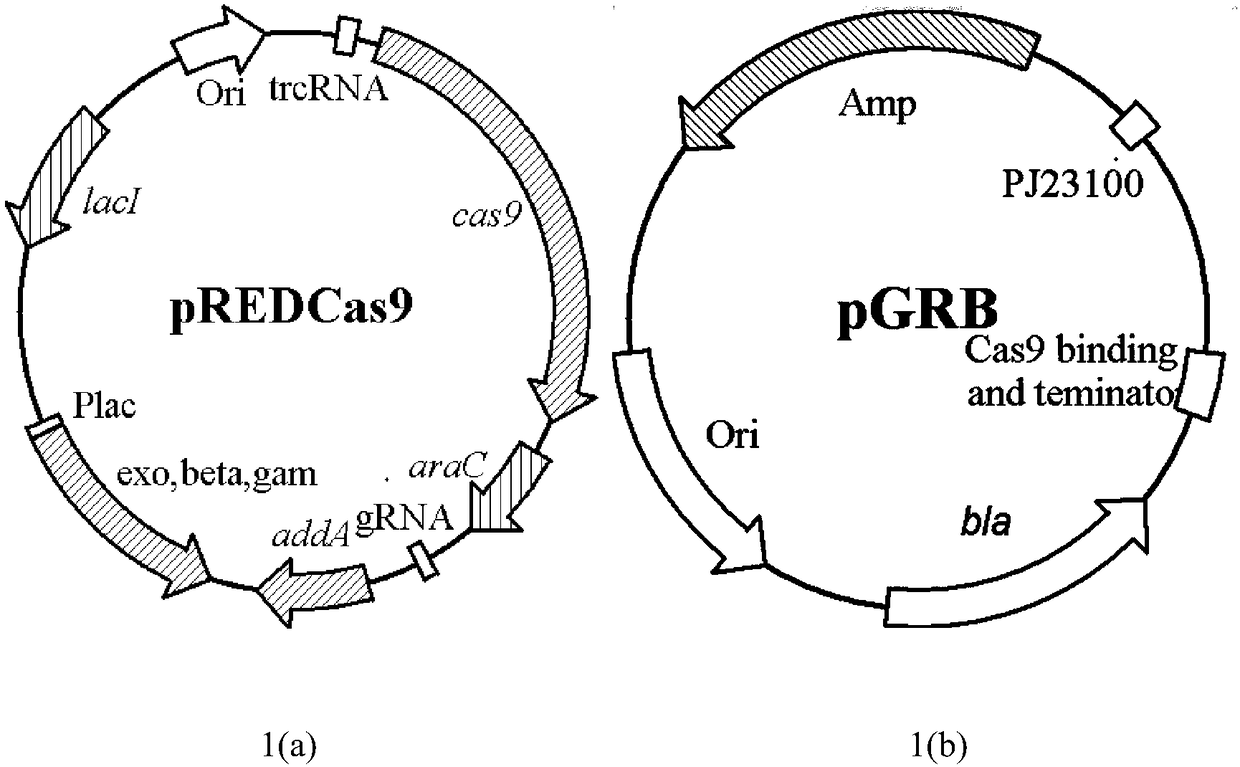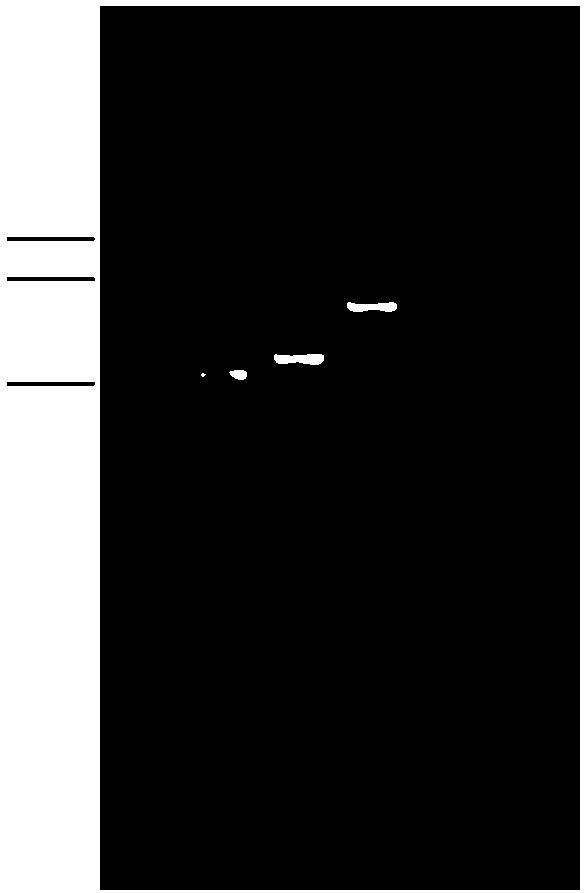Genetically engineered bacterium for high-yield production of hydroxytetrahydropyrimidine as well as construction method and application of genetically engineered bacterium
A technology of hydroxy ectoine and genetically engineered bacteria, which is applied in the field of genetic engineering, can solve the problems of failing to meet the industrial production requirements of hydroxy ectoine, high requirements for fermentation equipment, and large loss, and achieve separation and purification, and operability Strong performance and high production efficiency
- Summary
- Abstract
- Description
- Claims
- Application Information
AI Technical Summary
Problems solved by technology
Method used
Image
Examples
Embodiment 1
[0059] Construction of strain E.coli HECT06
[0060] 1 Methods of gene editing
[0061] The gene editing method used in the present invention is carried out with reference to the literature (Li Y, Lin Z, Huang C, et al. Metabolic engineering of Escherichia coli using CRISPR–Cas9 edited genome editing. Metabolic engineering, 2015, 31:13-21.), the method used The two plasmid maps of the attached figure 1 . Among them, pREDCas9 carries gRNA expression plasmid pGRB elimination system, bacteriophage λ Red recombination system and Cas9 protein expression system, spectinomycin resistance (working concentration: 100mg / L), cultured at 32°C; pGRB uses pUC18 as the backbone, including the promoter J23100, gRNA-Cas9 binding region sequence and terminator sequence, ampicillin resistance (working concentration: 100mg / L), cultured at 37°C.
[0062] The concrete steps of this method are as follows:
[0063] 1.1. pGRB plasmid construction
[0064] The purpose of constructing the plasmid p...
Embodiment 2
[0122] Utilize the method for the fermentative production of hydroxy ectoine by genetically engineered bacteria E.coli HECT06 as follows:
[0123] (1) Shake flask fermentation:
[0124] Slant culture: Streak inoculation of -80°C preserved strains on the activated slant, culture at 37°C for 12 hours, and passage once;
[0125] Shake flask seed culture: Scrape a ring of slant seeds with an inoculation loop and inoculate in a 500mL Erlenmeyer flask containing 30mL of seed medium, seal with nine layers of gauze, and incubate at 37°C and 200rpm for 7-10h;
[0126] Shake flask fermentation culture: Inoculate 10-15% inoculum into a 500mL Erlenmeyer flask with fermentation medium (final volume is 30mL), seal with nine layers of gauze, 37°C, 200r / min shaking culture, during the fermentation process by supplementing Add ammonia water to maintain the pH at 7.0-7.2; add 60% (m / v) glucose solution to maintain the fermentation (use phenol red as indicator, when the color of the fermentatio...
Embodiment 3
[0140] Fermentation experiment of strain E.coli HECT06 on 5L fermenter:
[0141] Slope activation culture: Scrape a ring of strains from the -80°C refrigerator bacteria preservation tube, spread evenly on the activation slope, incubate at 37°C for 12 hours, transfer to an eggplant-shaped bottle and continue to cultivate for 12 hours;
[0142] Seed cultivation: Take an appropriate amount of sterile water in an eggplant-shaped bottle, insert the bacterial suspension into the seed medium, keep the pH at about 7.0, the temperature at 37°C, and the dissolved oxygen at 25-35%, and cultivate for 6 hours;
[0143]Fermentation culture: add fresh fermentation medium according to 15% inoculation amount, start fermentation, control pH to be stable at around 7.0 during fermentation, maintain temperature at 37°C, and dissolve oxygen between 30-40%; After the glucose is consumed, add 80% (m / v) glucose solution to maintain the glucose concentration in the fermentation medium at 0.1-.5g / L; the...
PUM
 Login to View More
Login to View More Abstract
Description
Claims
Application Information
 Login to View More
Login to View More - R&D
- Intellectual Property
- Life Sciences
- Materials
- Tech Scout
- Unparalleled Data Quality
- Higher Quality Content
- 60% Fewer Hallucinations
Browse by: Latest US Patents, China's latest patents, Technical Efficacy Thesaurus, Application Domain, Technology Topic, Popular Technical Reports.
© 2025 PatSnap. All rights reserved.Legal|Privacy policy|Modern Slavery Act Transparency Statement|Sitemap|About US| Contact US: help@patsnap.com



